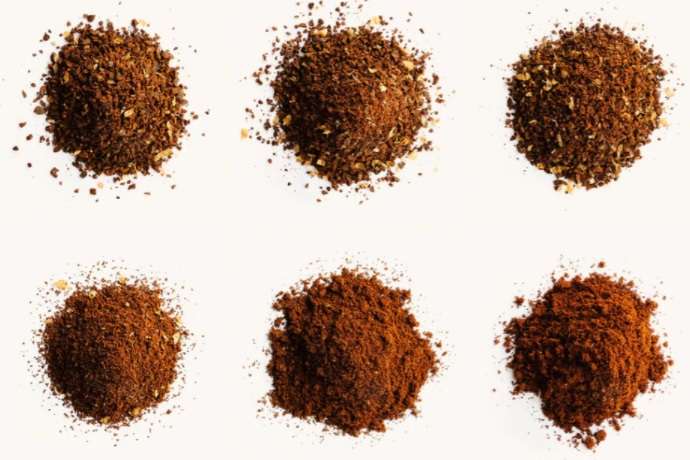
Grinding your coffee right before brewing is like unlocking the door to its full potential. It’s about freshness, flavor, and the magic of transforming beans into a mesmerizing cup of coffee. When it comes to grind size, coarse coffee holds a special place. It’s the key to some of the most beloved brewing methods, such as French Press and Cold Brew, where a larger grind size allows for a slower extraction and a fuller, richer flavor. Grinding coffee at home not only ensures the freshest cup but also gives you control over the grind size, letting you tailor your brew to perfection.
Key Takeaways
- Choosing the Right Grinder: The cornerstone of a great coarse grind is the grinder you use. Burr grinders are typically preferred for their consistency and control over the grind size, compared to blade grinders that can be less uniform.
- Impact of Grind Size on Brewing Methods: Coarse grind is not one-size-fits-all; it’s essential for methods like French Press, where it prevents the filter from clogging and ensures a clean brew. On the other hand, espresso or Aeropress requires a finer grind to maximize flavor extraction.
- Tips for Achieving the Perfect Coarse Grind:
- Start with fresh, whole beans for the best flavor and aroma.
- If using a burr grinder, select the coarse setting and adjust as needed for your brewing method.
- For blade grinders, pulse in short bursts to avoid overheating and achieve a more uniform coarse grind.
- Always experiment with grind size and brewing time to find your perfect cup.
The Basics of Coarse Coffee Grinding
Coarse coffee grinding is a crucial step for coffee lovers aiming to brew the perfect cup. Imagine coarse ground coffee like chunky sea salt; it’s less about fine particles and more about giving each coffee piece its moment to shine during brewing. This grind size is especially vital for brewing methods such as French Press and Cold Brew, where water and coffee interact for an extended period. A coarser grind ensures that the water flows freely, extracting the right amount of flavor without overdoing it and preventing any fine particles from sneaking into your cup, which could result in a gritty texture.
Comparatively, finer grinds are the go-to for espresso or Aeropress, where the water passes through the coffee quickly, requiring a larger surface area to capture the essence of the beans in a short time. Each grind size has its dance partner in brewing methods, forming pairs that bring out the best in each coffee bean.
Selecting the Right Coffee Grinder
When it comes to achieving the perfect coarse grind, the battle is won or lost with the choice of grinder. Burr grinders and blade grinders are the two contenders here, each with its strengths and areas of challenge.
Burr grinders are celebrated for their precision. They crush beans between two abrasive surfaces, allowing for a consistent grind size throughout. This uniformity is paramount for brewing methods that rely on coarse grounds, as it ensures even extraction and a balanced flavor. Whether manual or electric, burr grinders give you the ability to adjust the grind size, making them versatile allies in your quest for the perfect brew.
On the other hand, blade grinders take a more cavalier approach. They chop up beans with a spinning blade, which can result in a less consistent grind. While they’re generally more affordable and straightforward to use, achieving a uniform coarse grind can be a bit of a gamble. If you’re using a blade grinder, pulsing in short bursts and shaking the grinder can help even things out.
Step-by-Step Guide to Grinding Coarse Coffee at Home
Grinding coarse coffee at home is straightforward with the right approach. Here’s how to ensure your coffee grounds are perfectly coarse for your brewing method of choice:
- Choose Your Grinder Wisely: Opt for a burr grinder if you can, as it allows for more consistent and adjustable grind sizes. Blade grinders can work in a pinch, but expect a bit of trial and error to get the coarseness just right.
- Measure Your Beans: Start with a general rule of thumb—about 1 to 2 tablespoons of coffee beans for every 6 ounces of water you plan to brew. This ratio may vary based on personal taste and the specific brewing method.
- Adjust the Grinder Settings: If you’re using a burr grinder, set it to the coarsest setting available. The exact setting can vary between machines, so you might need to experiment a bit to find the perfect coarseness for your brew.
- Grind the Coffee: Place your measured beans in the grinder and begin grinding. For burr grinders, a 10-15 second grind should be sufficient. If you’re using a blade grinder, use short, quick pulses and shake the grinder gently between pulses to help achieve a more uniform grind.
- Check the Grind: Coarse coffee grounds should resemble sea salt or coarse sand. If the grounds seem too fine or too uneven, adjust your grinding method accordingly.
- Store Properly: Transfer your freshly ground coffee to an airtight container and store it in a cool, dry place to preserve its freshness and flavor until you’re ready to brew.
Achieving the Perfect Coarse Grind for Various Brewing Methods
The size of your coffee grounds significantly impacts the brewing process and the final flavor of your coffee. Here’s how a coarse grind interacts with various brewing methods:
French Press: A quintessential method for coarse grounds. The larger size allows for a slower extraction, reducing bitterness and enhancing body. Aim for grounds that resemble sea salt in texture, allowing water to saturate and extract flavor efficiently.
Cold Brew: Coarse grounds are ideal for cold brew, given the prolonged brewing time. Extra-coarse grounds work best, ensuring a smooth flavor without over-extraction. The slow diffusion of flavors from the coarse grounds results in a rich, less acidic brew.
Percolators and Cowboy Coffee: These traditional brewing methods also benefit from a coarser grind. For percolators, a medium-coarse grind prevents the coffee from becoming over-extracted and bitter. Cowboy coffee, brewed over an open flame, uses coarse grounds to ensure a robust flavor that’s easy to settle at the bottom of the pot before serving.
Storing Your Coarse Ground Coffee
Storing your coarse ground coffee properly is essential to keep its freshness and flavor intact. Here are some best practices:
Use an Airtight Container: Keep your coffee in a non-transparent, airtight container to protect it from air, moisture, and light.
Cool and Dry Location: Store your container in a cool, dry place. A pantry shelf away from any heat source is ideal.
Avoid the Freezer for Daily Use: Regularly used coffee should not be stored in the freezer as the temperature fluctuations can affect its flavor. However, for long-term storage of beans that you won’t use immediately, the freezer can be an option if you store them in small, airtight portions.
Recommended Coarse Coffee Brands
For those who prefer the convenience of pre-ground coffee without sacrificing quality, here are some top coarse coffee brands, known for their exceptional taste and quality:
- Stone Street Coffee: Famed for its Cold Brew Reserve Colombian Supremo, Stone Street offers a coarse grind perfect for cold brewing. It’s known for its smooth, strong flavor and low acidity.
- Bizzy Organic Cold Brew Coffee: A smooth and sweet blend that is micro-sifted for consistency, Bizzy’s Organic is ideal for cold brew aficionados looking for a balanced, flavorful cup.
- Cold Brew Lab Extra Coarse Grind: Unique for its dual roast profile, this brand blends dark and medium roasts for a versatile flavor that works beautifully in both cold and hot brew methods.
- Stone Cold Jo: This dark roast is all about rich flavors with hints of toffee, chocolate, and caramel. It’s organic, kosher, and specifically roasted for a strong, smooth taste.
- Kicking Horse Coffee: Known for its kick, this brand offers a range of roasts suitable for coarse grinding, ideal for those who enjoy a bold, robust cup of coffee.
FAQs
How long does coarse ground coffee stay fresh? Once ground, coffee begins to lose its freshness and flavor due to exposure to air, moisture, and light. Ideally, use coarse ground coffee within a week, although it can remain reasonably fresh for up to a month if stored properly in an airtight container away from light and heat.
Is it better to grind coffee fine or coarse for specific brewing methods? The grind size should match your brewing method to extract the coffee’s full flavor. Coarse grinds are perfect for French Press, Cold Brew, and Percolators, which allow water to interact with the coffee grounds for longer. Finer grinds suit methods like Espresso or Aeropress, where water passes through quickly, needing more surface area to pick up flavors.
Final Thoughts
Grinding coarse coffee at home isn’t just about transforming beans into brewable bits; it’s about unlocking your coffee’s full potential. The right grind size, particularly when you’re aiming for a coarse consistency, plays a pivotal role in the brewing process, affecting everything from flavor extraction to the body of your brew. Selecting the appropriate grinder, be it burr or blade, is crucial for achieving the desired coarseness and, consequently, the perfect cup of coffee.
Remember, the freshness of your grind, the consistency of your grind size, and the storage of your coffee all contribute significantly to the final taste in your cup. By paying attention to these elements, you can elevate your home coffee experience to new heights, enjoying a richer and more flavorful brew each time.









